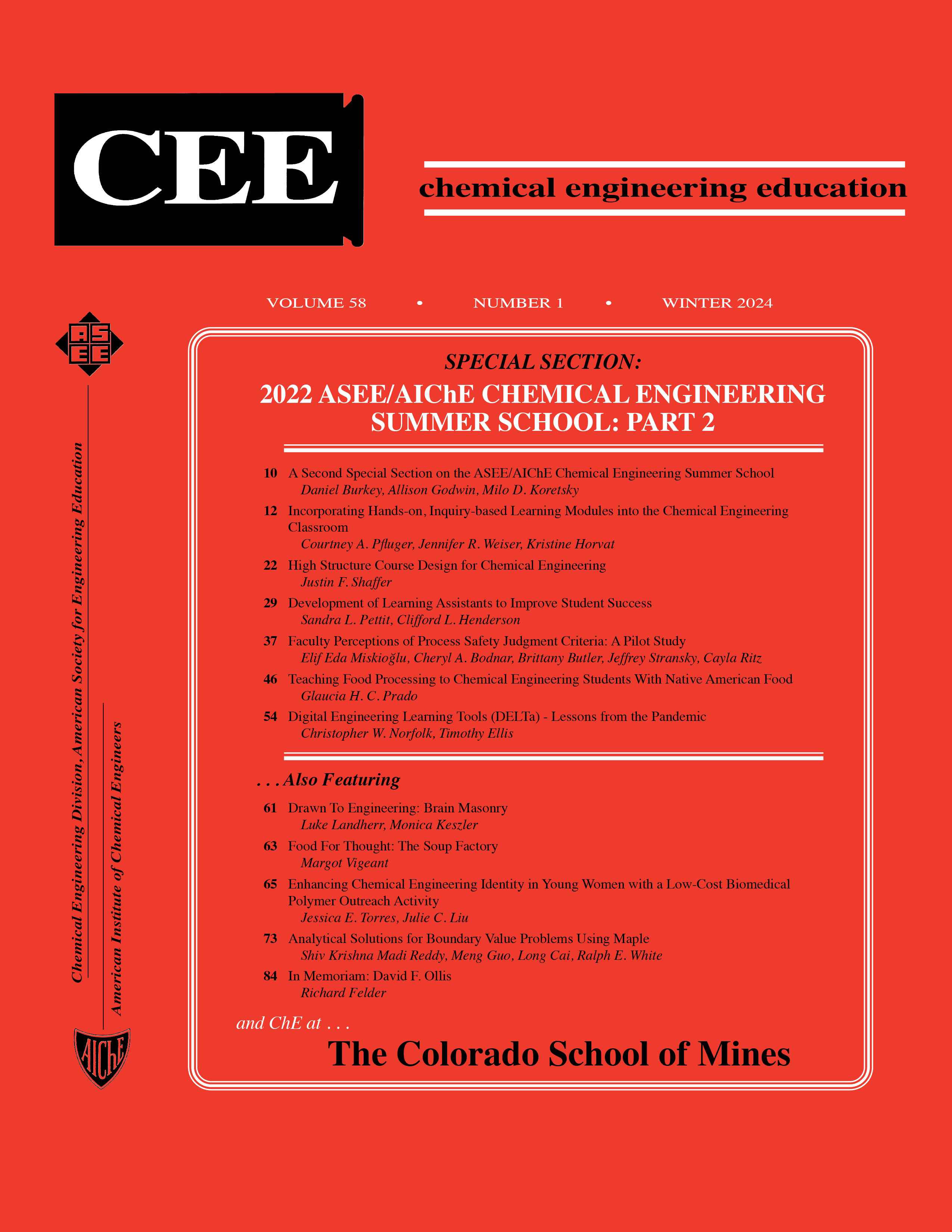High Structure Course Design for Chemical Engineering
DOI :
https://doi.org/10.18260/2-1-370.660-131875Résumé
High structure course design involves scaffolding students’ learning via pre-class content acquisition and assessment, in-class active learning exercises, after-class review and assessment, and frequent summative assessments. Research has demonstrated the efficacy of high structure courses including improved student performance, reduced achievement gaps, and increased feelings of belonging. This article will describe how to adopt high structure course design principles for chemical engineering courses in order to bring positive outcomes to students.


